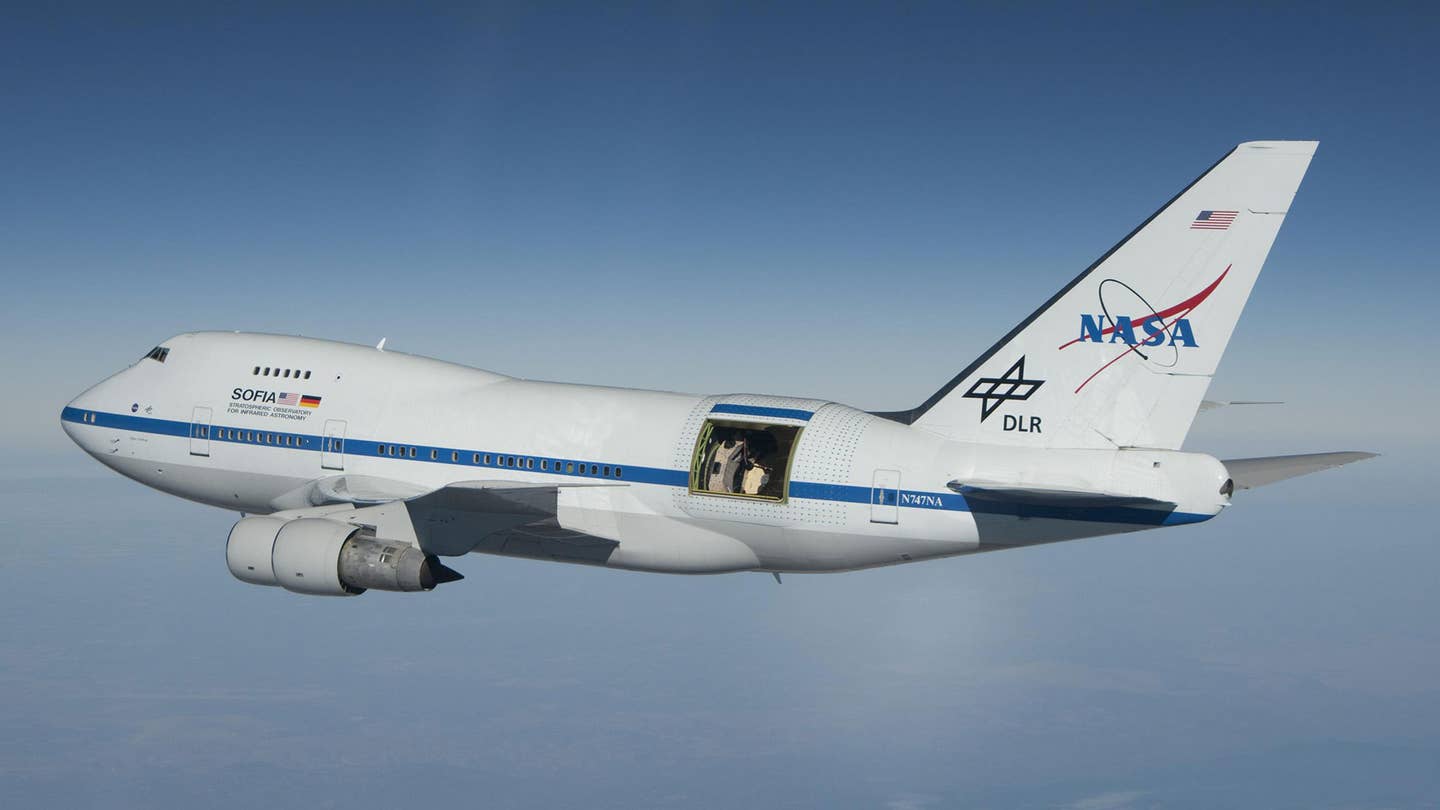Take a Virtual Tour of NASA’s Giant Boeing 747 Observatory
SOFIA will cast her infrared eye back to the sky early next year.

Over its five-decade lifespan, the Boeing 747 has served many roles: passenger jet, cargo carrier, presidential transport (doomsday and non-doomsday editions), aerial laser cannon, even big spoon to the space shuttle. But when it comes to weirdly awesome versions of the iconic jumbo jet, it’s hard to beat NASA’s Stratospheric Observatory for Infrared Astronomy. Colloquially abbreviated to SOFIA, this 747 serves as the world’s largest flying observatory. And it’s about to head back to the skies to try and sort out some mysteries of the universe.
SOFIA is equipped with a reflecting telescope with an effective diameter of 100 inches—the same size as the Hooker Telescope at the Mount Wilson Observatory that Edwin Hubble used to demonstrate that the universe is expanding. Situated behind a retractable awning at the back of the plane, the telescope is gyro-stabilized and pneumatically and hydraulically isolated from the rest of the plane, in order to keep it level in spite of the microturbulence of everyday flight. Flying at an altitude of 39,000 to 45,000 feet means the telescope is above 99 percent of the water in the atmosphere, giving it a far better view than similar ground-based observatories.
As the name suggests, this four-engined flying telescope spends its days peering into the infrared bands of the EM spectrum. For the 2017 observing campaign (yes, that’s what NASA calls it), which stretches from February 2017 to January 2018, SOFIA will train her eye on Jupiter's satellite Europa, in order to try and learn more about the massive water plumes spied on the Galilean moon by the Hubble Space Telescope. The plane will also stare at Neptune’s enormous moon Triton, a massive interstellar region around the center of the Milky Way, and a supermassive black hole located roughly 12 billion light years away, among many other research projects being conducted by the telescope’s joint American/German team.
While SOFIA first flew in her current form a mere six years ago, her airframe will turn 40 next year. Originally delivered to Pan Am in 1977, the 747 was purchased by United in 1986, then bought by NASA in 2007. Considering Boeing may not build the 747 for all that much longer, it’s reassuring to see that these birds can still live full, productive lives well into their forties.

